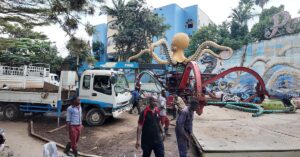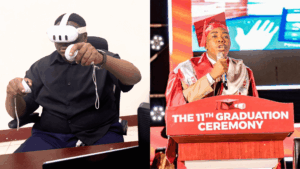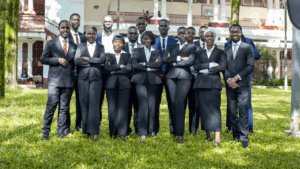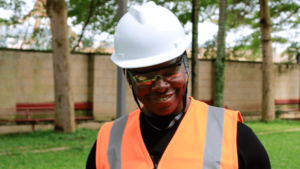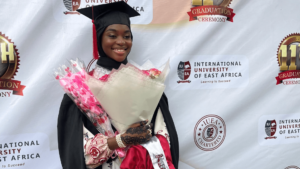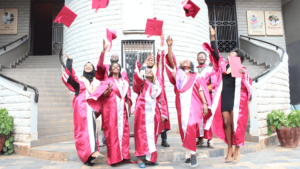The International University of East Africa has partnered with Regenerators, who have manufactured the first tractor ever made in Africa from scratch. The 25-horsepower, four-wheel tractor called OX-4, was designed by Oggun, a US-based company, which provided the blueprint. The International University of East Africa (IUEA) is one of the new universities in Uganda, founded in 2010 and located in Kananga, Kampala.
What is Regenerators?
Regenerators is a consortium of eight people, managed by an experienced team of business executives, engineers, designers, development specialists, and sustainability experts who have previously worked in start-ups, non-governmental organizations, government bodies, universities, and multinational corporations. The regenerators intend to start with one tractor and then, once they are done with tests, they will determine how many to roll out in the village OX-4 TRACTORS. The tractor has two unique aspects. Unlike other tractors which are powered by diesel or gasoline engines, the OX-4 runs by electric hub motors, which are powered by four rechargeable batteries. The tractors are also not for sale. They are for hire online and the acreage will be applied to the sensors such that, once it is deployed to dig one acre of land, it will only dig that much. Once the acre is done, it will stop by itself. According to David Moore, one of the co-founders of Regenerators, what makes the OX-4 unique is its simplicity of use and affordability, and that the repairs are simple since it has no engine. “We have designed it in a way that anybody can use it. Most of all, it does not need a lot of repairs since it has no engine but only two motors,” Moore says.
The tractor is equipped with solar power technology, batteries and two electric motors. So, the solar energy charges the four batteries which in turn help to run the two motors which are installed beside the rear tyres. The batteries are also swappable. “The OX-4 is going to be as efficient as the regular tractors or even more efficient,” Moore says.
So far, the batteries are being built in Uganda by an energy company called Soleil Power.
Nav Singh, one of the partners and the engineer in charge of manufacturing, says the tractor was made in Uganda with a team of ten Ugandans at Namanve in Wakiso. The OX-4 is currently available as a prototype. The testing is expected to be done in November.
What University Don Says
Prof. Emeka Akaezuwa, the vice chancellor of the IUEA, says the innovation was informed by Africa’s lowest number of tractors per hectare in the world. “In Africa, tractors are only afforded by large-scale farmers, leaving small-holder farmers stuck on rudimentary ways of farming. Regenerators came together to introduce farming equipment for mechanizing agriculture in Uganda,” he says.
He explains that they looked for people with best practices as well as technological advancement and discussed a model for the best solutions for agriculture using technology. The machinery is specifically designed for use on smallholder farms through the deployment of a local service provider.
Online System
It will be for hire through an online application called Last Mile. The application was created by Pannuel Mulongo, a partner with Local Links, an organisation that helps link farmers in villages. “The system (application) communicates with the tractor and anything done on the tractor will be reflected on the application,” Mulongo says.
“When the farmer orders for the service through the platform, he pays on the application and gets the tractor. The tractor will be installed with sensors such that, once it is deployed to dig one acre of land, it will only dig that much. Once the acre is done, it will stop by itself,” he adds. Through the application, the farmers are also able to advertise their products to a buyer who is also found on the application.
However, only farmers who are on the platform will be able to benefit t from the tractor services.
Meanwhile, the team does not want to sell the tractor because they want to make maintenance easy. So, they are going to create hubs in villages where farmers can easily access the services. Farmers will also go to these hubs to get training and knowledge on innovations.
Technology
The regenerators want to make the services as cheap as possible. According to Mulongo, intent hire is to cost about sh60, 000 per acre, compared to the current ploughing charge of about sh180, 000 per acre. The platform will also help farmers monitor their inputs such as labour, fertilizers, and cost of operation and then help them market the product. The tractor will be equipped with two cameras for easy monitoring. The tractor implements will be mounted both in the back and front. Singh explains that if one is planting a seeding, for example, there will be an implement in the front that will dig the hole and another in the back that will close it after dropping the seeds. The tractor will also be able to transport farmers’ produce to the market. “We are not in a rush to put it out on the market. We want to first make sure we have perfected the technology and the aesthetics of the tractor,” he says.
End Goal
The consortium intends to introduce regenerative farming. This kind of farming does not require the farmer to plough the fields but ensures that the soil retains water, absorbs nutrients and stores carbon. Instead of tilling the ground, the farmer lives on it, which keeps carbon in the ground and allows microbes to thrive.
The HUB
Currently, the tractor motors are imported from the UK. In future, according to the university, a hub will be created to manufacture all the implements in Uganda. The hub will also act as a link between other manufacturers from Europe and around the world. Once the hub is created, one tractor will be assembled in a period of two days.
“Through the hub, we hope to change the way young people view agriculture. We want them to see agriculture as a business but not as something for failures. In the long run, there will be youths maintaining/manufacturing the machines and those farming,” Pannuel Mulongo, a partner with Local Links, an organization that helps link regenerate farmers in the villages says.
After the project is fully rolled out, the university will also provide land on which all the innovation hubs will be concentrated. The hubs will host research-based data collected through the application so that better regenerative agricultural methods are developed and added to the farmer’s experience.
The hubs will also help the university train students who will be in charge of operating the tractor and training farmers on better agriculture methods.
By: Francis Emukule / Journalist at New Vision
 Loading…
Loading…

